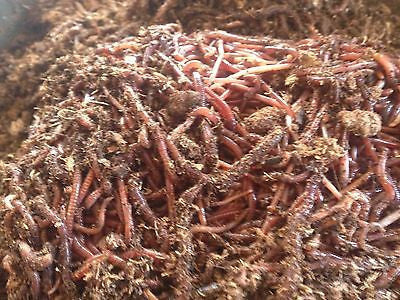Examine This Report on Red Wiggler Express
Examine This Report on Red Wiggler Express
Blog Article
The Facts About Red Wiggler Express Uncovered
Table of ContentsRed Wiggler Express Can Be Fun For EveryoneTop Guidelines Of Red Wiggler ExpressGet This Report about Red Wiggler Express5 Easy Facts About Red Wiggler Express ShownThe Ultimate Guide To Red Wiggler Express
Some worm farmers in fact keep food and water to simulate drought problems and bump up cocoon manufacturing. We do not suggest this for the home composter as it has the possible to exterminate as well numerous of your finest worms. Since you understand all regarding the red worm it's time to go out and discover a great supplier and get an extra pound or more and start your very own worm ranch.This overview will present you to the red wiggler to include a deeper on dive on the types and details on breeding, life process, and reproduction. We'll discuss just how to maintain red wigglers and why they should be the go-to worm for the majority of composters. The red wiggler (binomial name: eisenia fetida) is the globe's most usual composting worm.
A study recommends that the two can create hybrid children, a phenomenon which must or else be considered impossible between the majority of worm types. Fun truth: The "fetid" component of the binomial name refers to what some claim is a smelly secretion the red wiggler utilizes to repel killers. But I have actually been taking care of them for years and never noticed this! The anatomy of a red wiggler appears like that of various other typical earthworms; a long-segmented body starts at the pointed head and terminates at a slightly-flatted tail.
The Greatest Guide To Red Wiggler Express
The digestive system tract is straightforward, starting at the mouth where the worm begins to consume its food before passing it on the pharynx. The pharynx is a muscle section which acts like a pump to pull food right into the mouth prior to pumping it out right into the esophagus. The esophagus is slim and thin-walled and functions as the "waiting room" for the gizzard.
Keep in mind: This demand for grinding is why grit is recommended in a worm bin. The worm includes no native grinding ability so the worm counts on consumed grit to assist grind its food in the gizzard. The belly is where the first chemical malfunction of food happens with the aid of a protein-busting enzyme.

Within 42 days, these child worms will get to sexual maturity as evidenced by the appearance of the clitellum. A mature red wiggler can be expected to live between one to three years. The mighty red wiggler might occasionally be utilized as a bait worm for smaller fish or as a protein source for hens and reptiles.
The 8-Minute Rule for Red Wiggler Express
And as stated over, they are the most common composting worm in the world. But why? Well there's possibly not simply one reason. Instead, a combination of expense, hardiness, and comfort in a variety of temperature levels makes it one of the most appropriate composting worm for the majority of new vermicomposters. Red wigglers and their cocoons can make it through in a vast array of conditions.
This is a common method amongst worm carriers that don't wish to run the risk of having the worms sit in a warm or chilly warehouse over the weekend break. Worm farmers are not keeping worms in a scenario where they prepare to ship. The worms must be harvested from their environment first, so growers will certainly frequently set a Friday or Saturday due date in order to harvest in time for a Monday shipment.
To reduce delivery cost, you might intend to see if there are any nearby "Mama and Pop" shops via a Google search. If you do not find what you're looking for, then I invite you to take a look at worms via the Urban Worm Business! The amount of red wigglers you acquire should be only dependent upon the surface you have offered for vermicomposting.
I call these the "Large 3" aspects of worm bin upkeep. As pointed out previously, red wigglers have a wide temperature level tolerance.
Some Known Facts About Red Wiggler Express.

For ideal results, you wish to fire for about 60-70% moisture level. The easiest test for this is to squeeze a handful as difficult as you can. At the best dampness levels which is simply under 70% that handful need to barely produce one drop of fluid. pH in a worm bin is rather very easy to preserve.


The European Nightcrawler, the bigger cousin of the red wiggler, is simply as starved and also produces an excellent bait worm. It likes a bit of a cooler atmosphere than the red wiggler. The African Nightcrawler is an extremely huge composting worm and makes a stunning, granular cast.
The Indian Blue is starved, however additionally favors a warmer climate and it additionally exhibits a tendency to escape the container. The red wiggler is a sturdy worm and isn't as particular regarding its environment. I like to call it the Ford Taurus of vermicomposting worms; you will not brag to your hardcore composting pals that you have them, yet they will certainly serve you well.
Excitement About Red Wiggler Express
Surefire active 1/2 pound of hand sorted Red Wigglers/Compost with worms (+500 worms) in various stages of life from cocoons to mature worms in their all-natural environment/bedding. Hand sorted worms lowered the disruption of the worms therefore insuring real-time delivery. Red wiggler worms do not like vibrations or light.
Report this page